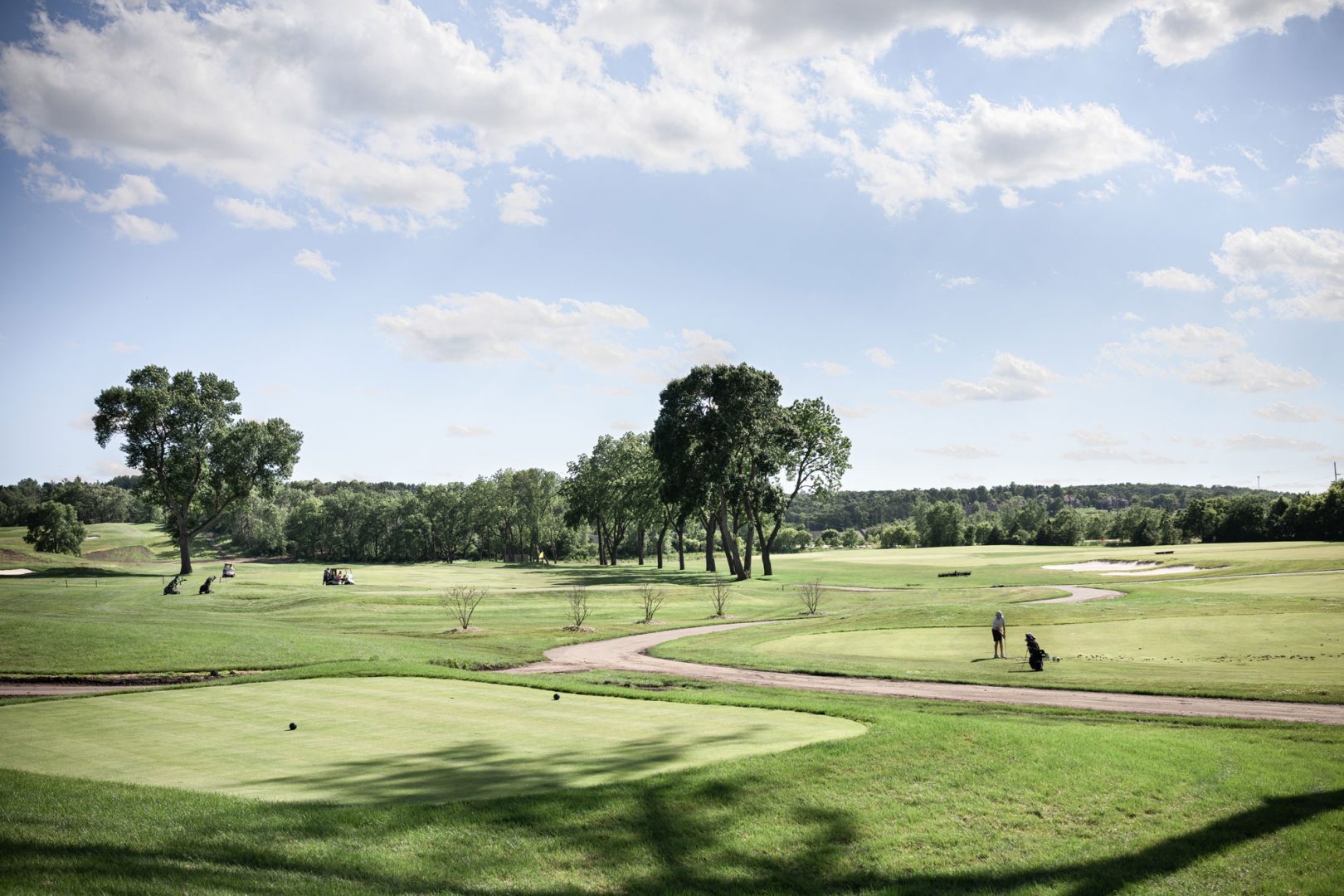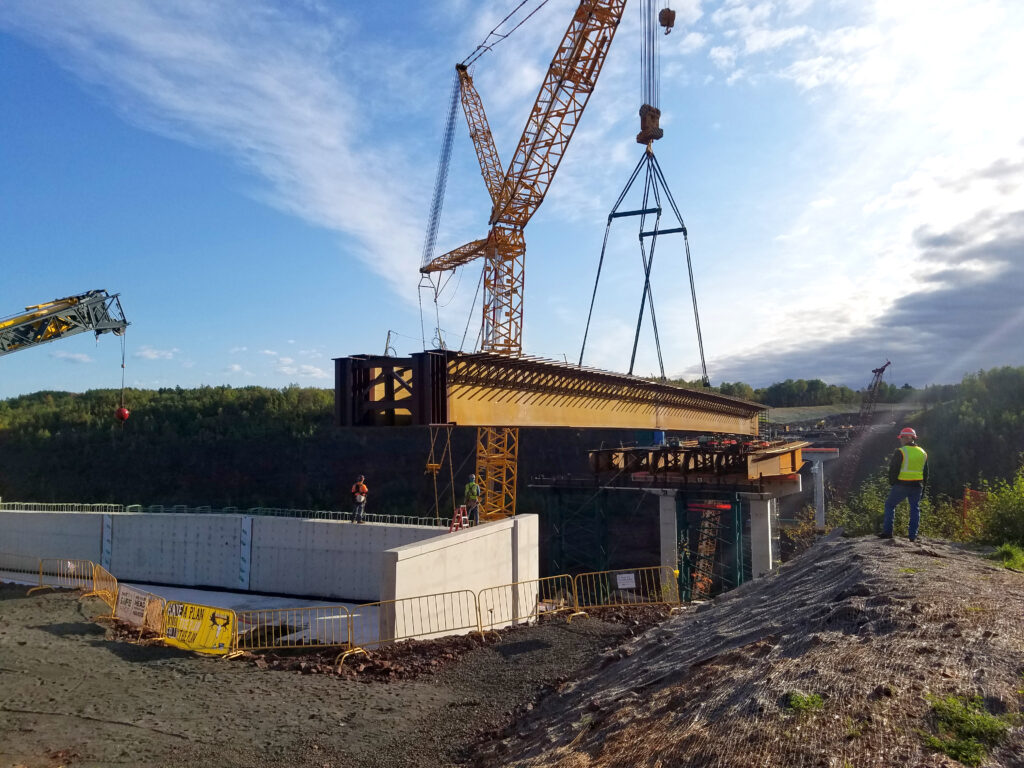Creating a sustainable water reuse system for the Rochester Golf & Country Club
By Bob Barth, Director of Land Development, WSB
For over 100 years, the Rochester Golf & Country Club has been a fixture in its community. Since opening, land around the course developed, but the rolling greens of the Country Club still attract golfers as they did in the early 1900s when a group of avid golfers leased 100 acres from two Mayo Clinic doctors.
The Decorah Shale effect
The landscape 100 years ago was very different than it is today. As development occurred throughout the area, the course began to experience water issues. The course is located on the Decorah Shale Geologic Formation, an over 60-foot-thick layer of shale bedrock. Water passes through the impermeable shale layer slowly, causing drainage issues for many properties throughout southeastern Minnesota. In the case of the golf course, water is unable to penetrate the shallow shale layer located below the surface of the course, creating drainage issues and pockets of standing water on fairways and greens.
The most inexperienced golfer knows that standing water on a golf course leads to playability issues. At one point, there were playability issues on seven of the 18 holes – equating to 3,000 feet of playing conditions that had standing water or drainage problems. The County Club reached out to our team at WSB to find a sustainable solution to the chronic water issues that plagued the historic course.
Keeping greens, green
Golf courses use a lot of water and droughts or excess water negatively impact course profitability and sustainability. Like many Minnesota courses, Rochester Golf & Country Club uses groundwater for irrigation. However, the playability issues caused by the Decorah Shale are unique. Research and studies have criticized golf courses over the years for chemical and water use, particularly groundwater. Recently, many courses have taken strides to become more environmentally sensitive and eco-friendly. Rochester Golf & Country Club approached their golf course renovation project with sustainability in mind and decided to reuse the seepage water and surface water as a partial replacement for the groundwater they used for irrigation. This process allowed them to improve their environmental footprint.
Creating a solution out of the problem
WSB performed a rigorous rainfall and runoff analysis to determine the amount of available seepage and runoff water. The analysis included long-duration simulations of water yield and irrigation using state-of-the-art hydraulic modeling software. Every water reuse project is unique. Most of the land that Rochester Golf & Country Club sits on drains in a single direction, making it easier to capture seepage and runoff water. This efficiency of drainage created a single point of collection into a new irrigation pond.
After completing the reuse analysis, we worked with the Country Club and an irrigation design consultant to design the irrigation pond, pump station and pump house, the collection system to deliver water to the irrigation pond, and the outlet works from the pond to the public system. Drainage tile was placed under the fairway turf to allow water to feed into the irrigation pond. In the past, the Country Club used over 10 million gallons of groundwater for irrigation, annually. With the new water reuse and drainage system, the course’s groundwater usage dropped to 4 million gallons. The water reuse system can pump as much as 1,500 gallons per minute into the irrigation system. The reuse system also alleviates the need to tap into the city’s water supply and ensures that the course can stay watered even when conservation restrictions are in place.
Full-circle sustainability
The Rochester Golf & Country Club is dedicated to sustainability beyond water reuse and has established an on-site, 10,000-square-foot garden that supplies fresh produce to their executive chef. Additionally, the club is home to 400,000 honey bees, an effort to protect the honey bees’ declining population. Throughout the Country Club’s recent restoration, they have paid close attention to reusing available resources including creating benches out of downed trees and repurposing old cart path rock for new cart path base layers.
A fresh start in 2019
The course has been under construction since 2016 and reopened this spring. Under the direction of renowned golf course architect Tom Doak, the acclaimed 18-hole golf course went through a substantial renovation to restore the course to its original 1925 A.W. Tillinghast design.
Golf is a significant economic driver in Minnesota and water plays a vital role in keeping these courses busy throughout the golf season. In addition to our work on the Rochester Golf and Country Club, WSB has developed water reuse systems and measures for Oneka Ridge Golf Course in Hugo and Eagle Valley Golf Course in Woodbury.
B ob is a Principal at WSB with over 20-years of experience providing technical and management support to public and private clients. Bob’s special expertise in water resources management, infrastructure planning, project development, and land development make him an effective and trusted adviser on a variety of projects.
ob is a Principal at WSB with over 20-years of experience providing technical and management support to public and private clients. Bob’s special expertise in water resources management, infrastructure planning, project development, and land development make him an effective and trusted adviser on a variety of projects.




